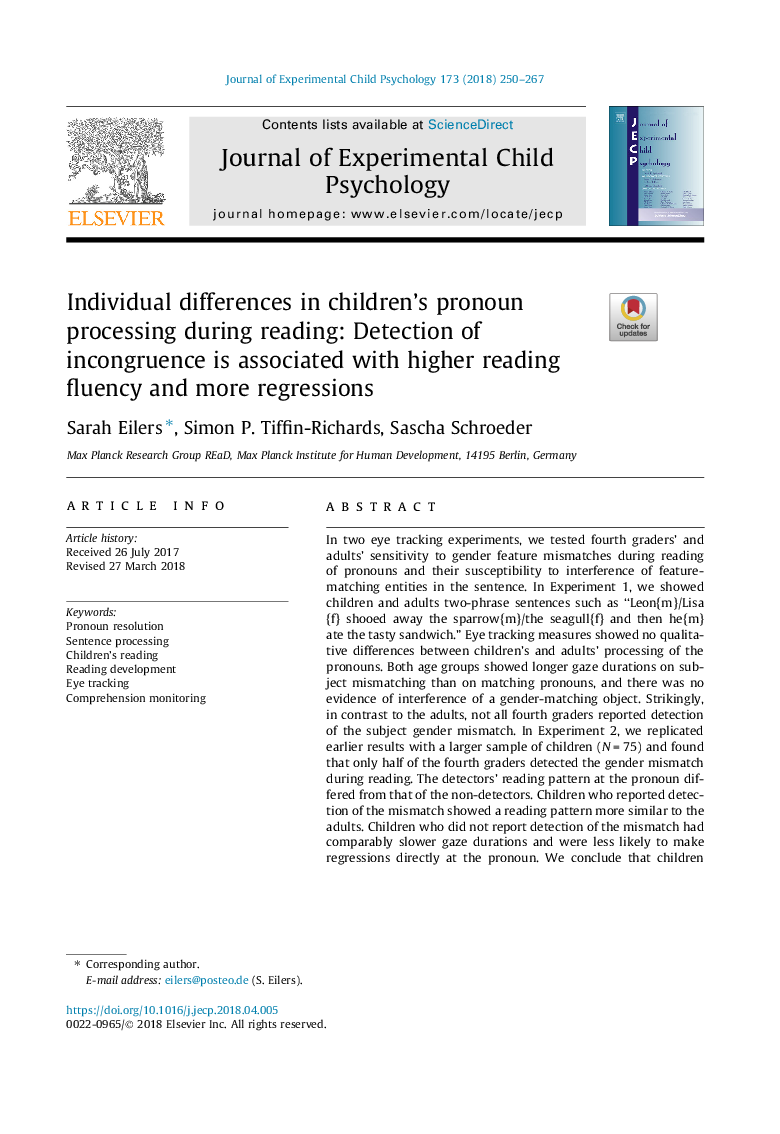| Article ID | Journal | Published Year | Pages | File Type |
|---|---|---|---|---|
| 7273835 | Journal of Experimental Child Psychology | 2018 | 18 Pages |
Abstract
In two eye tracking experiments, we tested fourth graders' and adults' sensitivity to gender feature mismatches during reading of pronouns and their susceptibility to interference of feature-matching entities in the sentence. In Experiment 1, we showed children and adults two-phrase sentences such as “Leon{m}/Lisa{f} shooed away the sparrow{m}/the seagull{f} and then he{m} ate the tasty sandwich.” Eye tracking measures showed no qualitative differences between children's and adults' processing of the pronouns. Both age groups showed longer gaze durations on subject mismatching than on matching pronouns, and there was no evidence of interference of a gender-matching object. Strikingly, in contrast to the adults, not all fourth graders reported detection of the subject gender mismatch. In Experiment 2, we replicated earlier results with a larger sample of children (Nâ¯=â¯75) and found that only half of the fourth graders detected the gender mismatch during reading. The detectors' reading pattern at the pronoun differed from that of the non-detectors. Children who reported detection of the mismatch showed a reading pattern more similar to the adults. Children who did not report detection of the mismatch had comparably slower gaze durations and were less likely to make regressions directly at the pronoun. We conclude that children who read more fluently use their available processing resources to immediately repair grammatical inconsistencies encountered in a text.
Related Topics
Social Sciences and Humanities
Psychology
Developmental and Educational Psychology
Authors
Sarah Eilers, Simon P. Tiffin-Richards, Sascha Schroeder,
